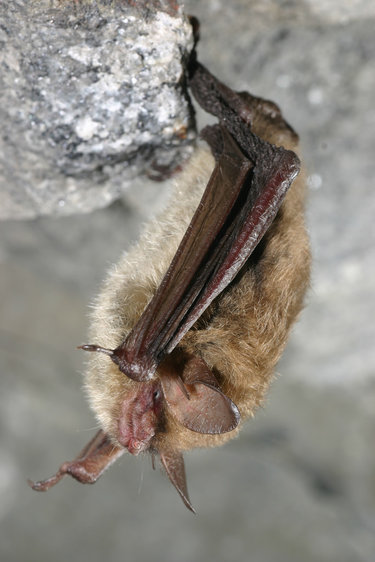Service proposes classifying long-eared bats as endangered
— From the U.S. Fish and Wildlife Service
The northern long-eared bat (Myotis septentrionalis) is currently classified as threatened.
The United States Fish and Wildlife Service announced a proposal on March 22 to reclassify the northern long-eared bat as endangered under the Endangered Species Act.
The bat, currently listed as threatened, faces extinction due to the range-wide impacts of white-nose syndrome, a deadly disease affecting cave-dwelling bats across the continent.
Bats are critical to healthy, functioning ecosystems and contribute at least $3 billion annually to the U.S. agriculture economy through pest control and pollination, according to the service.
“White-nose syndrome is devastating northern long-eared bats at unprecedented rates, as indicated by this science-based finding” said Regional Director Charlie Wooley in a release from the service. “The service is deeply committed to continuing our vital research with partners on reducing the impacts of white-nose syndrome, while working with diverse stakeholders to conserve the northern long-eared bat and reduce impacts to landowners.”
White-nose syndrome has spread across nearly 80 percent of the species’ entire range and nearly all of its U.S. range since it was listed as threatened in 2015. The proposal to change the status of the northern long-eared bat comes after an in-depth review of the species found that the bat continues to decline and now meets the definition of endangered under the Endangered Species Act.
The service’s review found that white-nose syndrome is expected to affect 100 percent of the northern long-eared bat’s U.S. range by 2025, spreading more quickly than anticipated across the continent. Data indicate white-nose syndrome has caused estimated declines of 97 to 100 percent of affected northern long-eared bat populations.
The northern long-eared bat is found in 37 states, including New York, and the District of Columbia in the eastern and north central United States and all Canadian provinces from the Atlantic Coast west to the southern Northwest Territories and eastern British Columbia.
These bats spend winter hibernating in caves and abandoned mines. During summer, the northern long-eared bat roosts alone or in small colonies underneath bark or in cavities or crevices of both live and dead trees. It emerges at dusk to fly primarily through the understory of forested areas, feeding mostly on moths, flies, leafhoppers, caddisflies, and beetles.
To address the growing threat of white-nose syndrome, the service is leading the White-nose Syndrome National Response Team, a coordinated effort of more than 150 non-governmental organizations, institutions, tribes, and state and federal agencies. “We developed and are using disease surveillance tools to monitor spread and impacts, and we’re exploring promising biological, chemical, immunological, genetic and mechanical treatments,” the release says.
The proposed rule to reclassify the northern long-eared bat as endangered appears in the March 23 Federal Register. Comments on the proposal may be submitted through May 23 electronically at http://www.regulations.gov or by U.S. mail to: Public Comments Processing, Attn: FWS–R3–ES–2021–0140, U.S. Fish and Wildlife Service, MS: PRB/3W, 5275 Leesburg Pike, Falls Church, VA 22041–3803.
Comments may also be made at an April 7 public hearing, held through Zoom: Register for the virtual public meeting and hearing.
